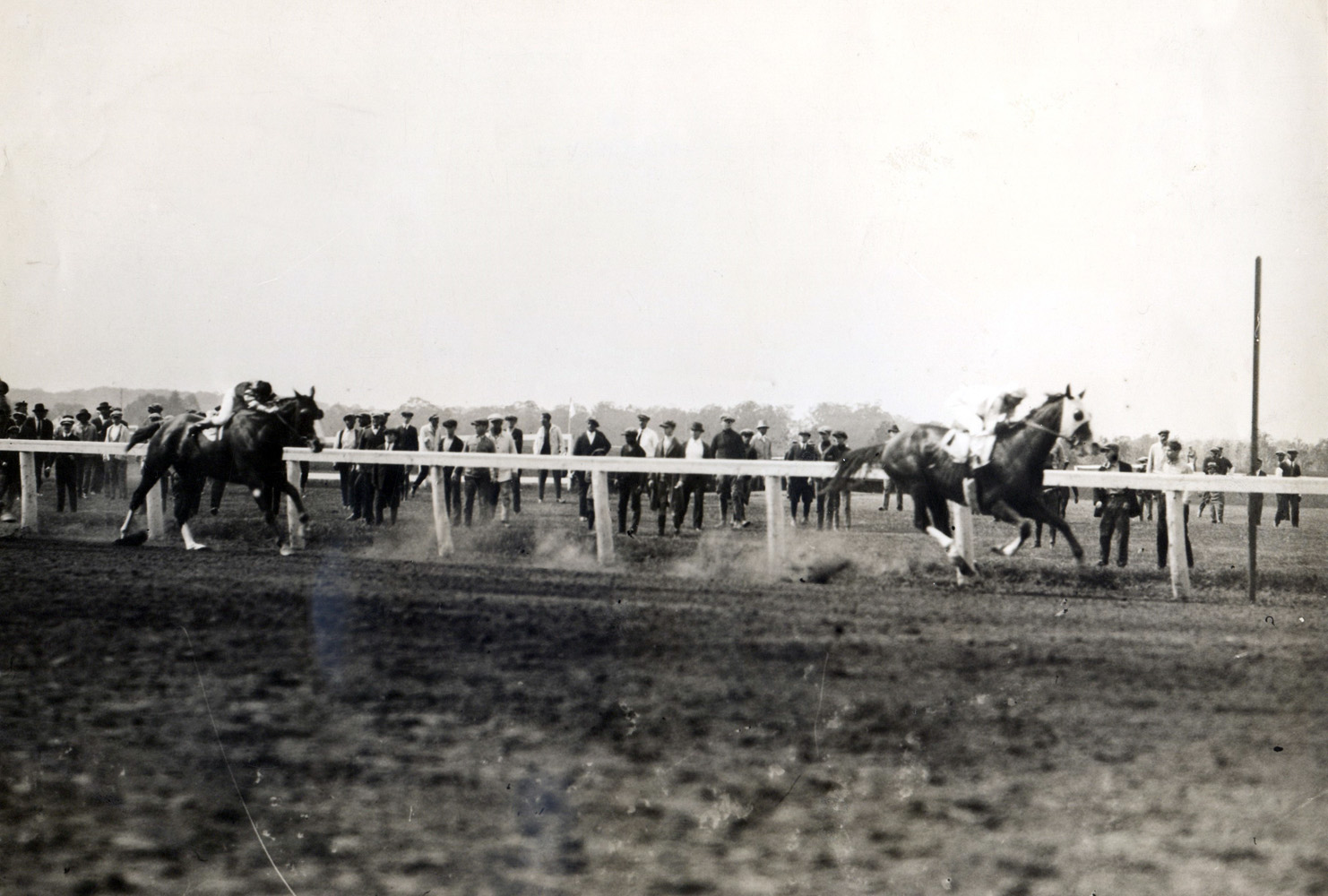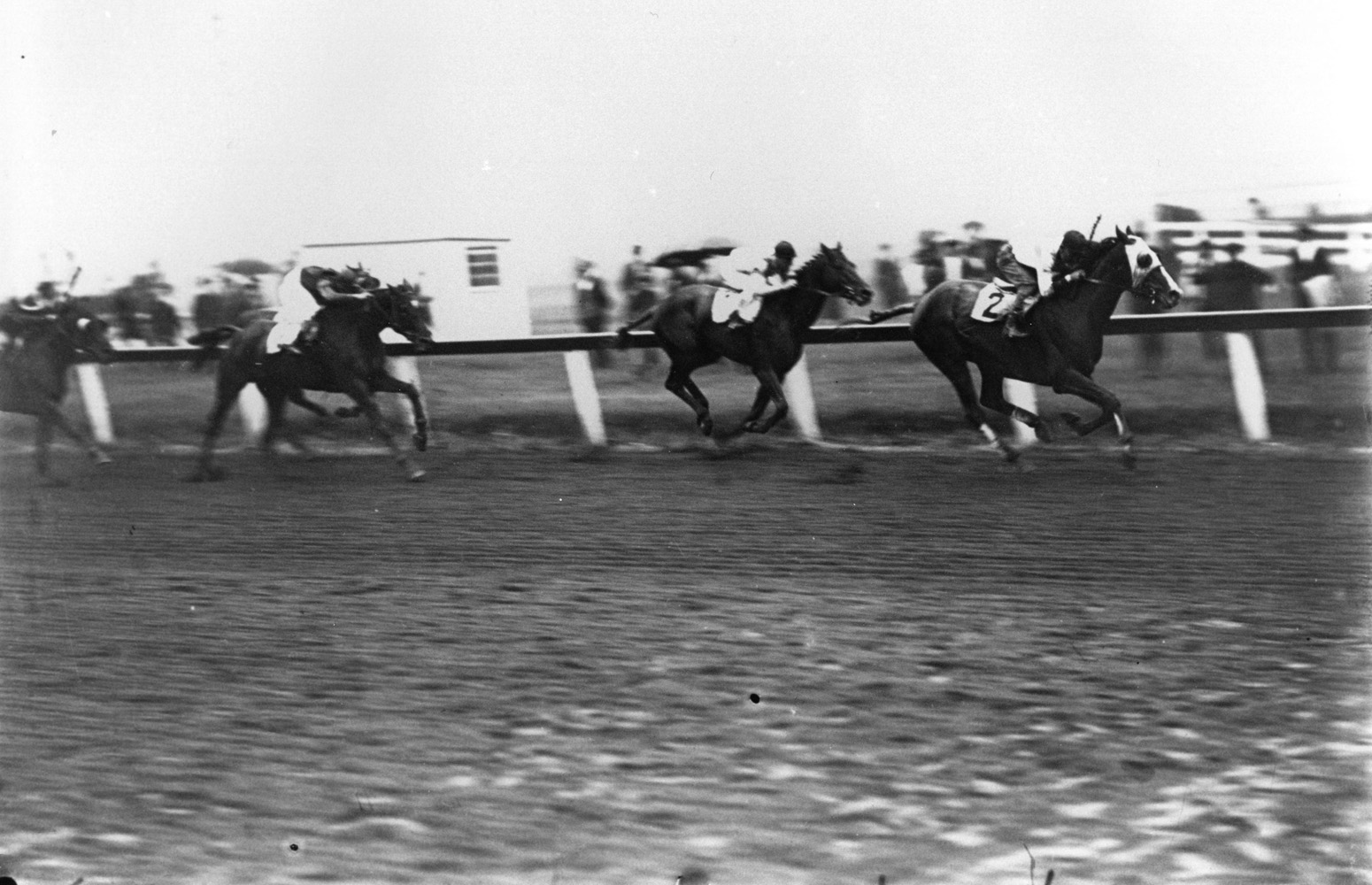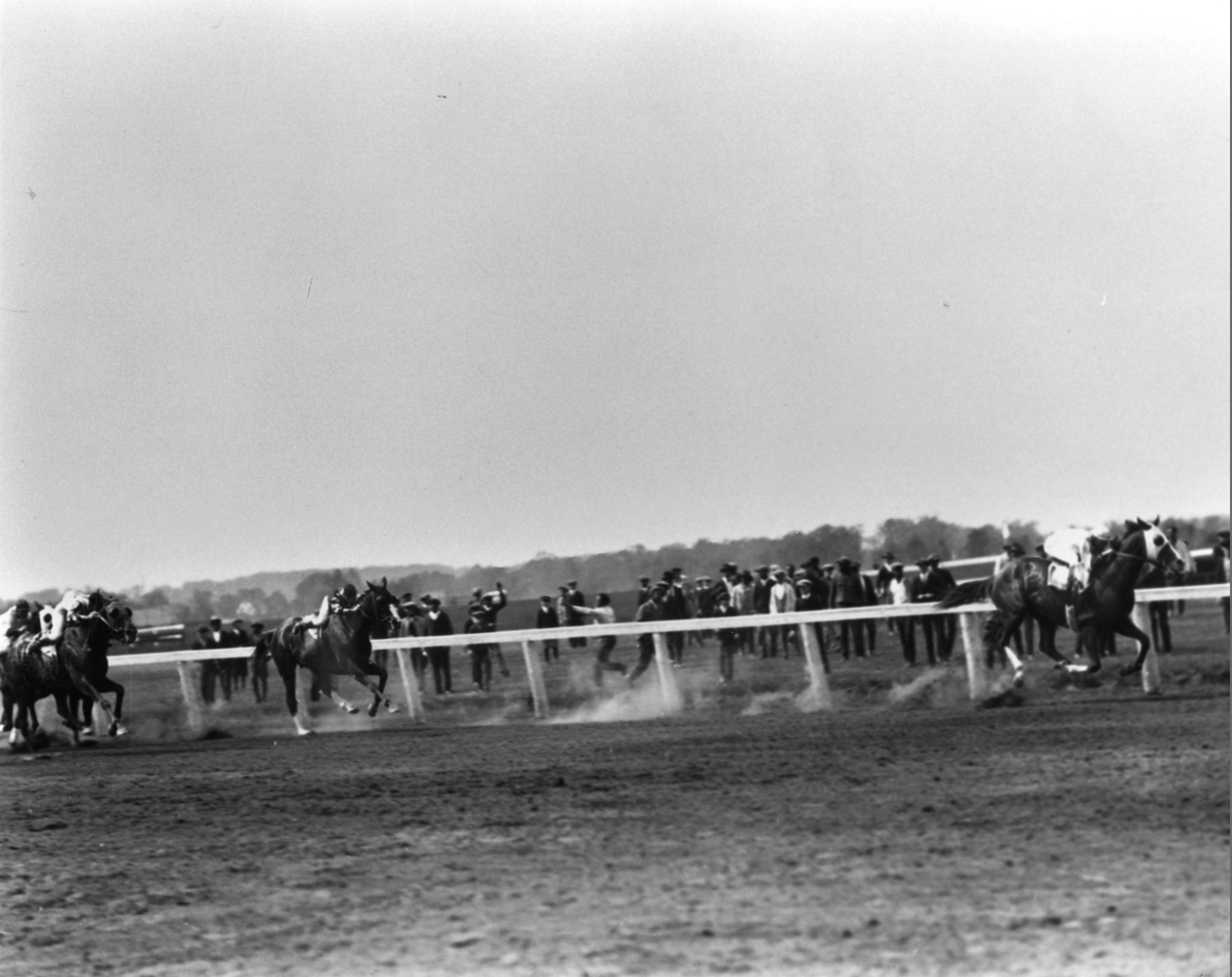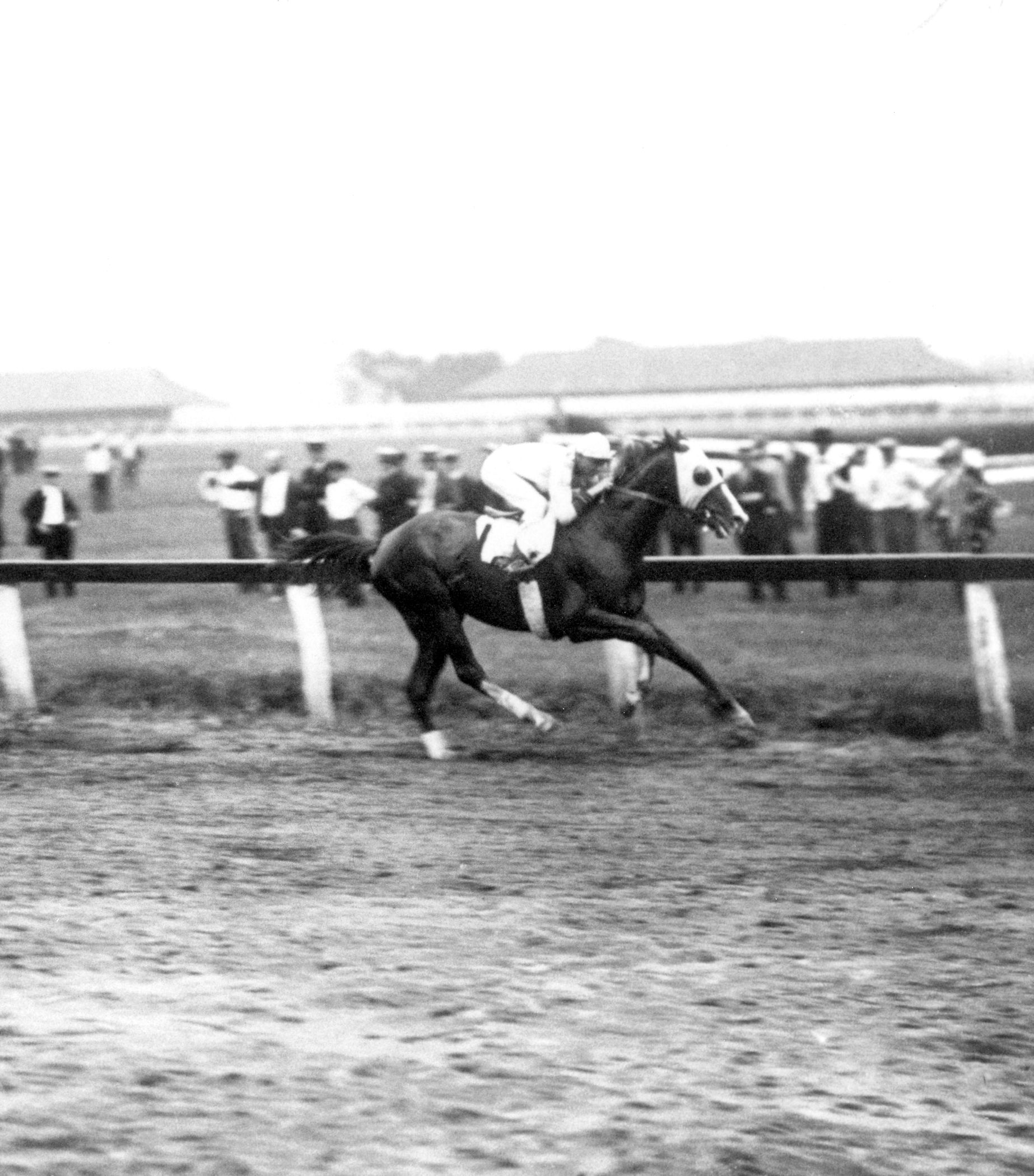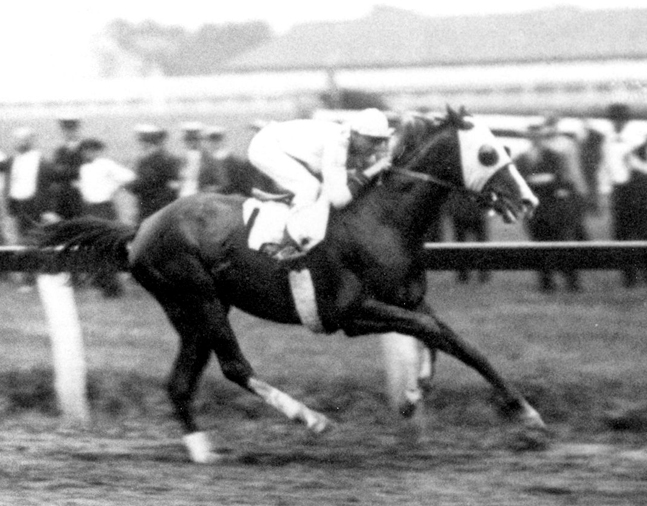Grey Lag (KY)
The legendary John Madden, one of the top breeders and trainers in American racing history, described Grey Lag as the best of the 182 stakes winners he bred. That’s an impressive statement considering Madden bred five Kentucky Derby winners, five Belmont Stakes winners, and the first American Triple Crown champion.
Racing Record
47
Starts
| 1920 | 13 | 4 | 5 | 2 | $17202 $17,202 |
| 1921 | 13 | 9 | 2 | 1 | $62596 $62,596 |
| 1922 | 6 | 5 | 1 | 0 | $26937 $26,937 |
| 1923 | 5 | 4 | 1 | 0 | $26990 $26,990 |
| 1927 | 2 | 2 | 0 | 0 | $1400 $1,400 |
| 1928 | 4 | 1 | 0 | 0 | $1550 $1,550 |
| 1931 | 4 | 0 | 0 | 0 | $40 $40 |
Biography
The legendary John Madden, one of the top breeders and trainers in American racing history, described Grey Lag as the best of the 182 stakes winners he bred. That’s an impressive statement considering Madden bred five Kentucky Derby winners, five Belmont Stakes winners, and the first American Triple Crown champion.
Bred at Madden’s famed Hamburg Place near Lexington, Kentucky, Grey Lag was a blaze-faced chestnut with three white feet by Star Shoot out of the Meddler mare Miss Minnie. As a yearling, Grey Lag was sold by Madden along with a filly for $10,000 to a young trainer on the rise named Max Hirsch.
Grey Lag did not break his maiden until his fifth start as a 2-year-old in 1920, but he developed quickly after that and caught the eye of esteemed trainer Sam Hildreth, who was putting together a powerful stable for oilman Harry F. Sinclair. After winning the Champagne Stakes, Grey Lag was sold to Sinclair’s Rancocas Stable for $60,000 and transferred to Hildreth. Grey Lag ran six more times as a 2-year-old, winning the Remsen Handicap and Autumn Day Stakes and finishing second in the Kentucky Jockey Club Stakes.
After missing the 1921 Kentucky Derby because of a stone bruise, Grey Lag made his 3-year-old debut a winning one in the Freeport Handicap. He then finished third in the Withers before embarking on an eight-race win streak beginning with a three-length victory in the Belmont Stakes. He then defeated the likes of Mad Hatter, Exterminator, Eternal, John P. Grier, and Paul Jones in winning the Brooklyn Handicap. Next came the Dwyer Stakes, in which Grey Lag broke the Aqueduct track record and equaled the American mark for nine furlongs of 1:49. Victories in an overnight, the Empire City Derby, Knickerbocker Handicap, Mount Kisco Stakes, and Devonshire International followed.
With six wins in 23 days following the Dwyer, Grey Lag was a tired horse and proceeded to finish second in the Lawrence Realization and Jockey Club Gold Cup and fourth in the Latonia Championship. He was finally put away for the season to rest with an impressive sophomore record of 9-2-1 from 13 starts and earnings of $62,596.
Grey Lag won his first start as a 4-year-old in the Centerport Handicap before being caught at the finish by 7-year-old Exterminator in the Brooklyn Handicap. It was Grey Lag’s only loss of the year. Grey Lag went on to win the Queens County Handicap, Empire City Handicap, Mount Kisco Stakes, and Saratoga Handicap.
At 5, Grey Lag won the Kings County Handicap, Excelsior Handicap, Metropolitan Handicap, and Suburban Handicap. He carried 133 pounds in winning the Metropolitan and 135 in the Suburban, which was his final major victory.
Plagued by bad feet, Grey Lag was retired. He sired 19 foals before becoming sterile. After three years in retirement, Hildreth brought Grey Lag back to the races in 1927 at the age of 9. The old warrior won both of his starts that year in overnight races. The following year, he raced four times with one win and was retired again.
Following his second retirement, Grey Lag was given to a veterinarian as a riding horse, but the vet died shortly after and Grey Lag was sold as part of his estate. He passed through many hands and wound up back on the track at age 13, running against platers in Canada. In four starts, he finished no better than third.
Newspaper coverage of Grey Lag’s plight in Canada caused Sinclair to send a representative to Canada and repurchase Grey Lag. With a career record of 25-9-6 from 47 starts and earnings of $136,715, Grey Lag was retired for good and sent to Sinclair’s Rancocas Farm to live out his days as a pensioner. He died in 1942 at the age 24.
Achievements
Horse of the Year — 1921
Champion 3-Year-Old Male — 1921
Champion Older Male — 1922
Champion Older Male — 1923
Triple Crown Highlights
Won the Belmont Stakes — 1921
Media
